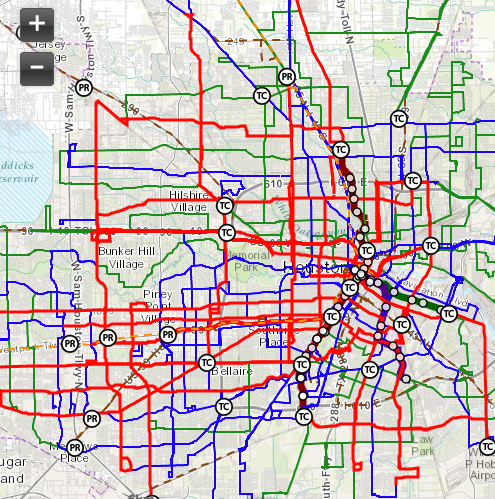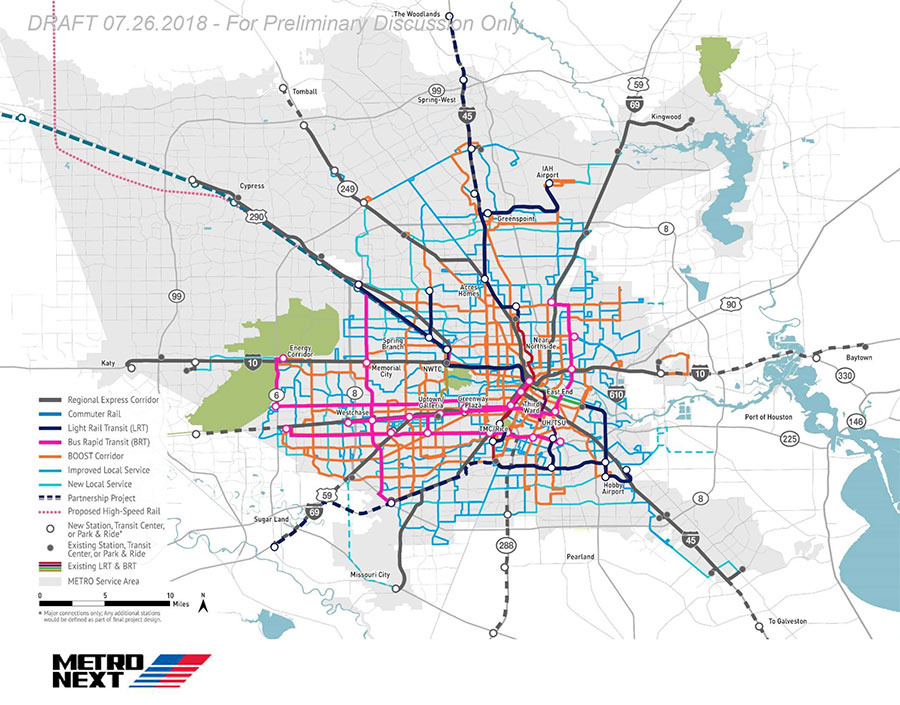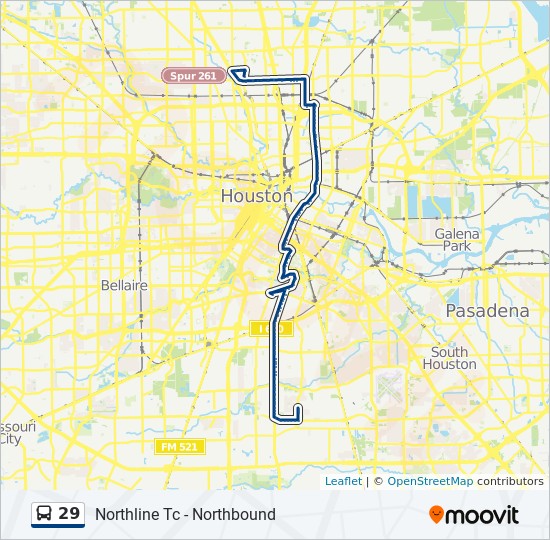

Purchase of 39 vehicles from CAF upon receipt of a new proposal compliant with Federal Transit Administration (FTA)Īnd "Buy America" guidelines.
#Metro rail route houston series#
CAF gave a refund, which METRO applied to the purchase of the H2 series cars. This order was cancelled in FebruaryĢ011 as it did not comply with the "Buy America" Act. The H1 and H2 series are electrically compatible and can operate together in the same train.įrom Wikipedia: For expansion of the METRORail system, METRO turned to CAF USA, with a total order of 105 cars placed in May 2010.

Red Line and can be operated as single cars or in two-car trains. Like the H1 series, they are normally used only on the The H2 series cars are shorter than the H1 series, at 81 feet (25 m) in length, and are distinguishable by their flatter cab ends and circular headlamps, with theĮlectronic destination sign (which use colored dots to indicate the line) conventionally mounted above the cab. They were delivered in October 2012 and entered service that December. In detail, including having more air-conditioning units. As with the previous generation, these new cars were built in Florin CA, but they differ slightly from the cars Utah received UTA decided not to exercise options for them.

These cars were originally slated for Utah Transit Authority's TRAX system, which METRO purchased for $83 million after Or in trains of two cars coupled together, though two-car trains have become the norm due to increasing ridership and the arrival of the H2 series.įrom Wikipedia: In the spring of 2011, METRO purchased a further 19 Siemens S70 vehicles (the same model as its original 18), citing the need to accommodate ridership that was 4 yearsĪhead of expectations and to get cars more quickly. They are normally used only on the Red Line and can be operated as single cars The line with a colored square) mounted directly in front of the cab rather than above it. The H1 series cars are distinguishable by their streamlined cab ends and rectangular headlamps, with the electronic destination sign (which have been modified to indicate They have a capacity of 72 seated and approximately 169 standing passengers, or a total capacity of around 241 per car. Designated by the manufacturer as S70 and based on earlier vehicles built for Portland's MAX Light Rail, each vehicle is 96 feet (29 m) longĪnd has a top speed of 66 mph (106 km/h). They were delivered in 2003–2004, for the opening of the first stage of the Red The original fleet of 18 vehicles was built by Siemens Transportation Systems in Florin CA. My pictures are from 2007, when the north end of the RED line ended at UH/downtown. This is the original version of the map without all the other stuff on it. Here are some maps I found on an old hard drive with maps from "the beginning" :-)
#Metro rail route houston pdf#
Websites and other additional information sources of interest for the area:Ĭlick here for the above map in pdf format. The signals of this light rail system are simple - bar signals prevail, with a few yellow and white "ball" signals at interlockings and gated crossings,

The shops for the green line is (for now) covered on the Tower 85 page. The first section opened on May 21st, 2015, the second section opened on January 11th, 2017 and added two additional stations. The GREEN 3.3 mile (5.3km) long, 9 station line opened in two phases, dependent on the completion of the The PURPLE line is 6.6 miles (10.6km) long and has 10 stations. Construction of the 5.3 mile (8.5km), 9 station extension started in July of 2009, and opened on December 21st, 2013.Ĭonstruction of two additional lines also began in July of 2009, but did not open until much later. The original part of the system, the RED line, opened on January 1st, 2004, with construction starting on March 13th, 2001. This page highlights the Metrorail Light Rail system running in Houston Texas.


 0 kommentar(er)
0 kommentar(er)
